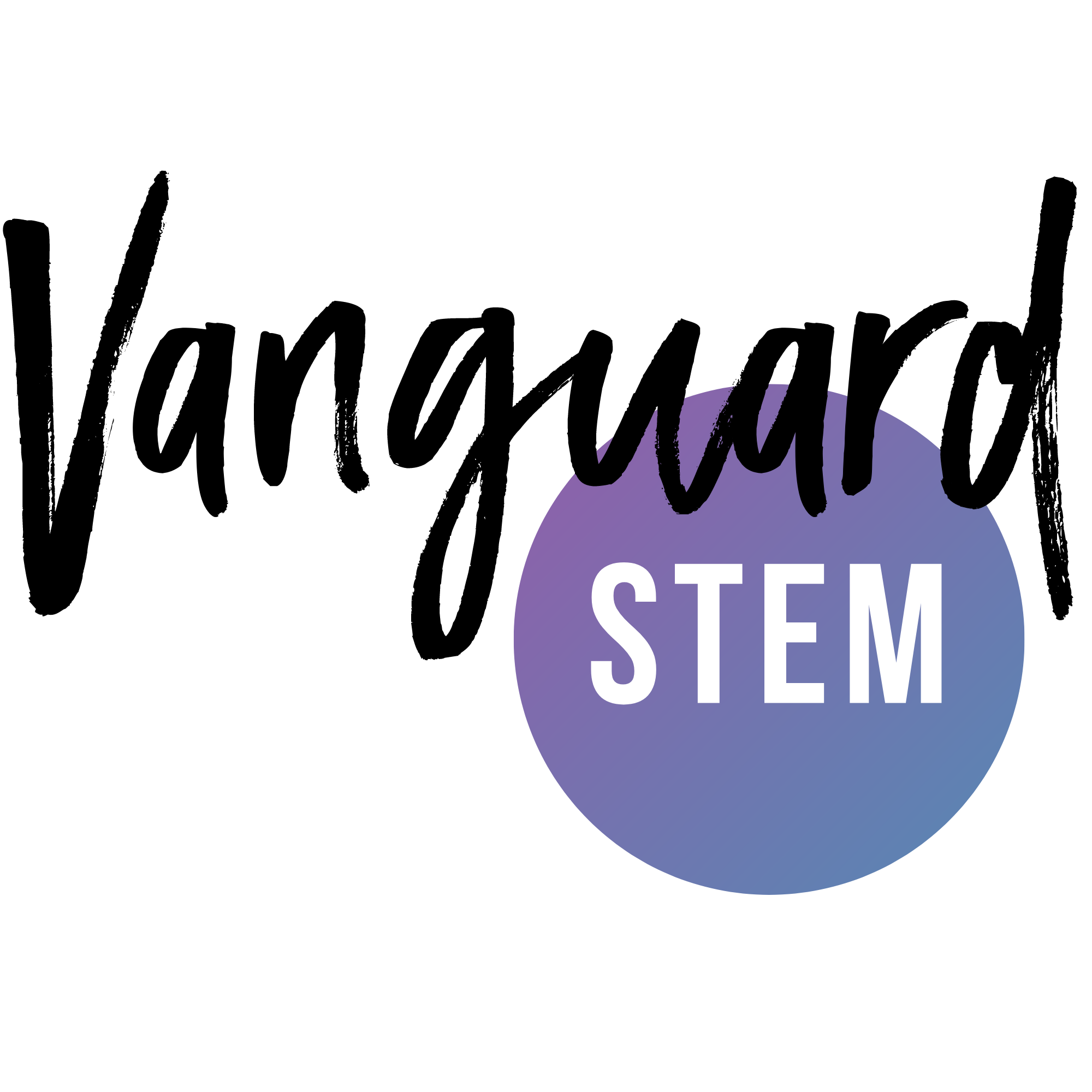We’re continuing with our monthly roundup of 8 recent peer-reviewed journal articles about STEM-related research, STEM equity or cultural studies in STEM. You can find more information about our year-long #VSGetsLit Book (and Article!) Club here. Come back every month for a new list of peer-reviewed articles and data-driven reports.

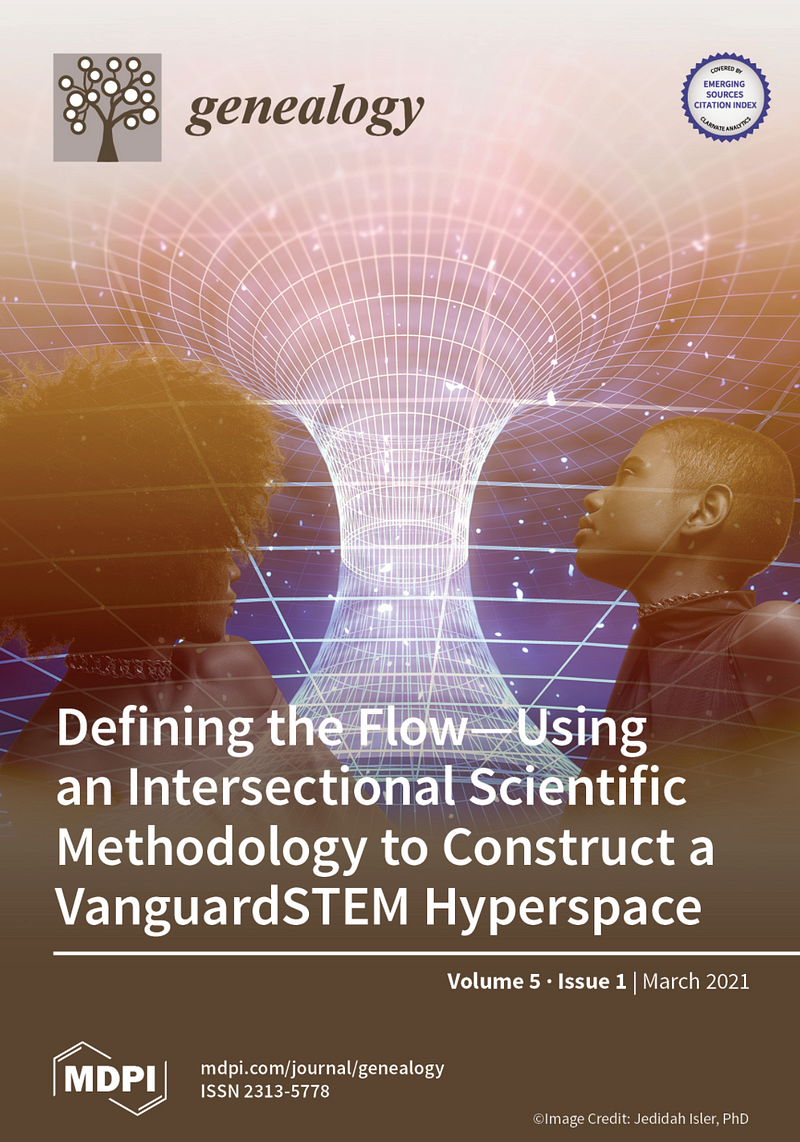
In January, the #VanguardSTEM team released our first peer-reviewed article (which you can find here) and we’re now the journal cover article(!). We were so excited for everyone to read (and CITE!) it, that we thought we’d extend that same sentiment to the many other scholarly works that BI[W+NBP]OC in STEM are producing. To that end, we introduced our year-long #VSGetsLit Book & Journal Club. This month we’re back with some publications we found across the innanets, that we thought you might enjoy that relate to basic STEM research as well as STEM equity and cultural studies. We will also add at least 1 previously published and seminal works from the literature to round out the bunch.
Editor’s Note: This is certainly not an exhaustive list and we are not affiliated with the publication’s authors or responsible for the content, journal choice or accessibility of any article below, unless specifically indicated. We simply want to #AmplifyBlackSTEM and #AmplifyBIPOCinSTEM by sharing articles that engage or demonstrate concepts similar to the VanguardSTEM hyperspace and an intersectional scientific methodology that we theorized in our paper. If you have written a recent paper and want us to highlight it, tag us (@VanguardSTEM) on twitter or instagram with #VSGetsLit and/or email us a pdf copy of it.
Here are 8 peer-reviewed articles by and for Black, Indigenous, Women & Non-binary People of Color in STEM.
1. Eccentric Binary Neutron Star Search Prospects for Cosmic Explorer
Find their article here.
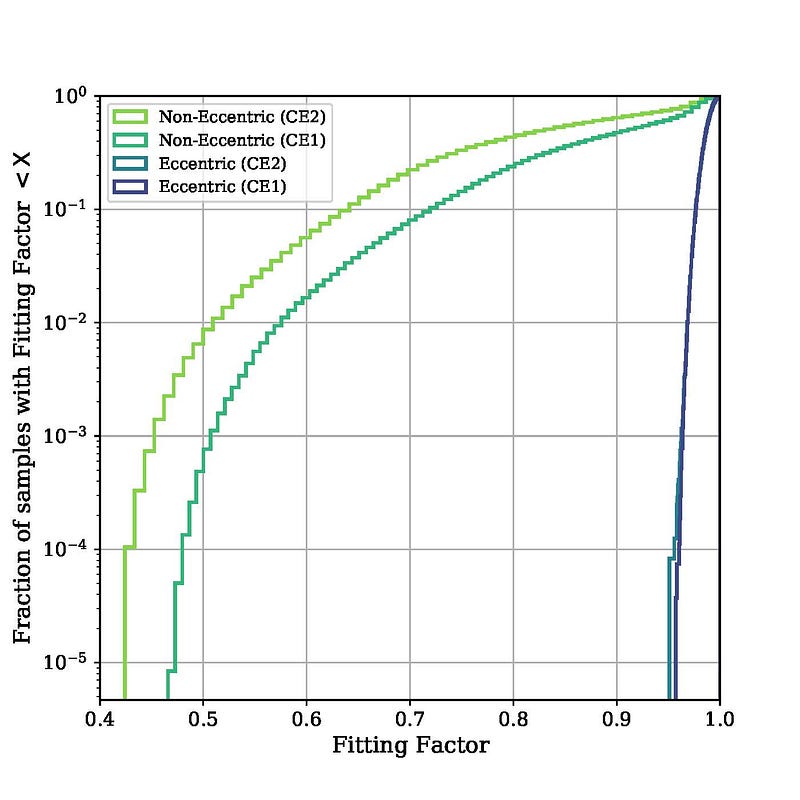
https://twitter.com/amberkiana_/status/1376552269555044354https://twitter.com/amberkiana_/status/1376552287812919299https://twitter.com/amberkiana_/status/1376552289452851205
Authors: Amber K. Lenon, Duncan A. Brown, Alexander H. Nitz
Abstract: “We determine the ability of Cosmic Explorer, a proposed third-generation gravitational-wave observatory, to detect eccentric binary neutron stars and to measure their eccentricity. We find that for a matched-filter search, template banks constructed using binaries in quasi-circular orbits are effectual for eccentric neutron star binaries with e_7≤0.004 (e_7≤0.003) for CE1 (CE2), where e_7 is the binary’s eccentricity at a gravitational-wave frequency of 7~Hz. We show that stochastic template placement can be used to construct a matched-filter search for binaries with larger eccentricities and construct an effectual template bank for binaries with e_7≤0.05. We show that the computational cost of both the search for binaries in quasi-circular orbits and eccentric orbits is not significantly larger for Cosmic Explorer than for Advanced LIGO and is accessible with present-day computational resources. We investigate Cosmic Explorer’s ability to distinguish between circular and eccentric binaries. We estimate that for a binary with a signal-to-noise ratio of 8 (800), Cosmic Explorer can distinguish between a circular binary and a binary with eccentricity e_7≳10−2 (10−3) at 90\% confidence.”
2. Journey to the center of GW170817: Bayesian parameter estimation of outflows from binary neutron
Find their dissertation here.
https://twitter.com/astrophisacist/status/1373004320497528833?s=20
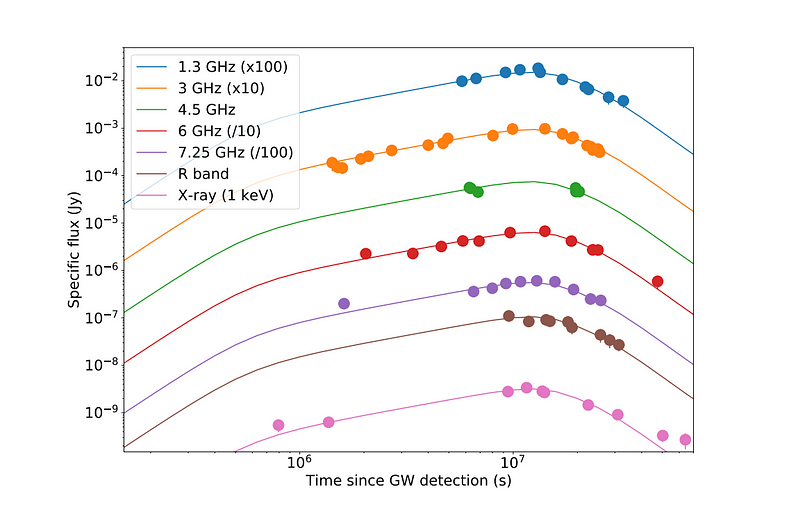
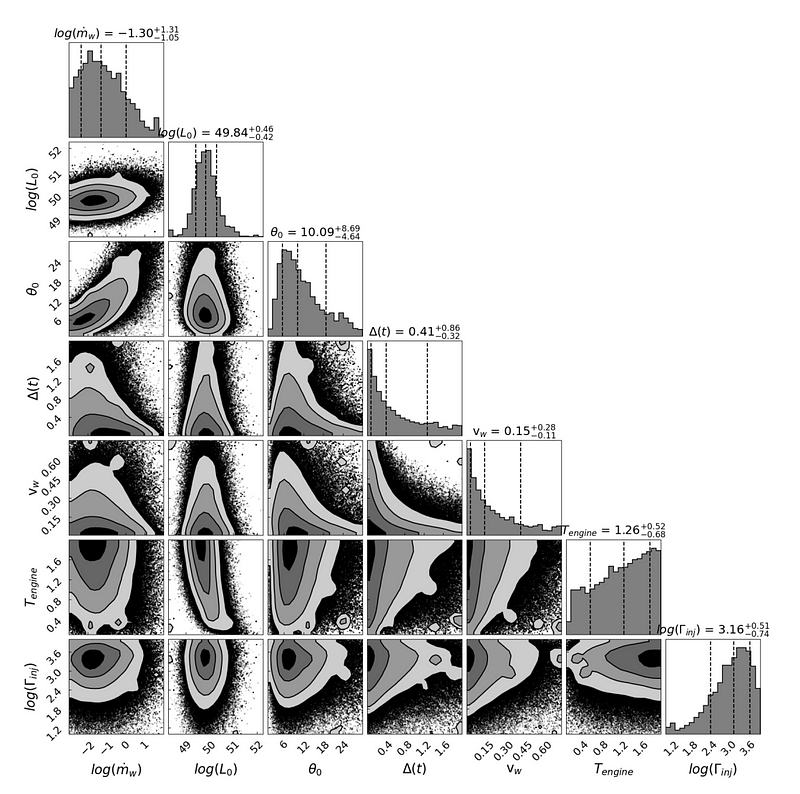
Author: Isabel J. Rodriguez
Abstract: “The discovery of GW170817 provided the first empirical evidence that merging binary neutron star systems are both progenitors of short gamma-ray bursts, as well as the primary sites of the nucleosynthetic rapid-neutron capture process. Initially detected as gravitational wave (GW) and gamma-ray burst (GRB) triggers, GW170817 was well-localized and follow-up observations detected a kilonova along with the GRB afterglow. Gamma-ray burst afterglows encode information about jet geometry and the environments in which the relativistic jets propagated. However, the information we can garner is limited to regions that are transparent to radiation — meaning it cannot directly give us information about the central engine, the properties of the jet at injection, or tell us how that jet acquires its structure. By using Bayesian parameter estimation analysis to connect astrophysical data with numerical models, we can begin to constrain the properties of these unobservable regions and improve our understandings of short GRBs and neutron star matter. In this work, we performed two separate analyses using emcee, a Python implementation of the Markov Chain Monte Carlo sampling method. We first constrained jet, environment, and observer parameters of a GRB afterglow resulting from an off-axis structured jet. We then used a subset of those results as data in our second analysis to constrain properties of the central engine, neutron star ejecta, and the jet at injection using an outflow model that simulates baryon-loaded wind and jet interactions. In total we were able to constrain 17 parameters, the largest parameter space so far explored using structured jet outflow and afterglow models. We anticipate that with future joint GW-GRB observations of binary neutron star merger events, similar techniques can be used to further probe the nature of neutron star matter, and by extension a neutron star’s equation of state.”
3. Multiwavelength Observations of the RV Tauri Variable System U Monocerotis: Long-term Variability Phenomena That Can Be Explained by Binary Interactions with a Circumbinary Disk
Find their article here.
We have a new paper out today on the interesting RV Tauri type binary system called U Monocerotis! It consists of a pulsating supergiant giant star and a stellar companion both orbiting each other within a large dusty disk! It's the first of its class to have X-rays detected! https://t.co/XAq3upxWRH
— Dr. Laura Vega (@LunaAlphaLyrae) March 12, 2021
Los astrónomos solo han identificado unas 300 variables RV Tauri, un tipo estrellas binarias, en la Vía Láctea. U Monocerotis, es el primero de su tipo en el que se han detectado rayos X, gracias al satélite @ESA_XMM. Aprende más: https://t.co/YJKXm3Vget pic.twitter.com/hsWfU5vEWQ
— NASA en español (@NASA_es) March 12, 2021
Conoce a una de las científicas 👩🔬: Laura Vega, recién doctorada en astrofísica en la Universidad de Vanderbilt, estudia estrellas RV Tauri, un tipo de estrellas supergigantes en sistemas binarios rodeadas por un inmenso disco de polvo. pic.twitter.com/nulnPSthVF
— NASA en español (@NASA_es) March 12, 2021
Authors: Laura D. Vega, Keivan G. Stassun, Rodolfo Montez Jr., Tomasz Kamiński, Laurence Sabin, Eric M. Schlegel, Wouter H. T. Vlemmings, Joel H. Kastner, Sofia Ramstedt, and Patricia T. Boyd
Abstract: “We present an X-ray through submillimeter observations of the classical RV Tauri (RVb-type) variable U Mon, a post-asymptotic giant branch (AGB) binary with a circumbinary disk (CBD). Our SMA observations indicate a CBD diameter of < 550 au. Our XMM-Newton observations make U Mon the first RV Tauri variable detected in X-rays. The X-ray emission is characteristic of a hot plasma (~10 MK), with LX =5 × 1030 erg s−1, and we consider its possible origin from U Mon, its companion, and/or binary system interactions. Combining DASCH and AAVSO data, we extend the time-series photometric baseline back to the late 1880s and find evidence that U Mon has secular changes that appear to recur on a timescale of ~60 yr, possibly caused by a feature in the CBD. From literature radial velocities we find that the binary companion is a ~2 M⊙ A-type main-sequence star. The orientation of the binary’s orbit lies along our line of sight (ω = 95°), such that apastron corresponds to photometric RVb minima, consistent with the post-AGB star becoming obscured by the near side of the CBD. In addition, we find the size of the inner-CBD hole (~4.5–9 au) to be comparable to the binary separation, implying that one or both stars may interact with the CBD at apastron. The obscuration of the post-AGB star implicates the companion as the likely source of the enhanced Hα observed at RVb minima and of the X-ray emission that may arise from accreted material.”
4. BIR repeat-containing ubiquitin conjugating enzyme (BRUCE) regulation of β-catenin signaling in the progression of drug-induced hepatic fibrosis and carcinogenesis
Find their article here.
I used to talk about science and my research on here, back when I still had a little light of hope left in my eyes 😂. I don’t talk about it much anymore, but today I’ll share a little about what I study to #AmplifyBlackSTEM and because I never saw anyone #BlackinCancerbio (1/4)
— Chrystelle Vilfranc, PhD 👩🏾🔬🎗 (@DrChrysVilfranc) June 10, 2020
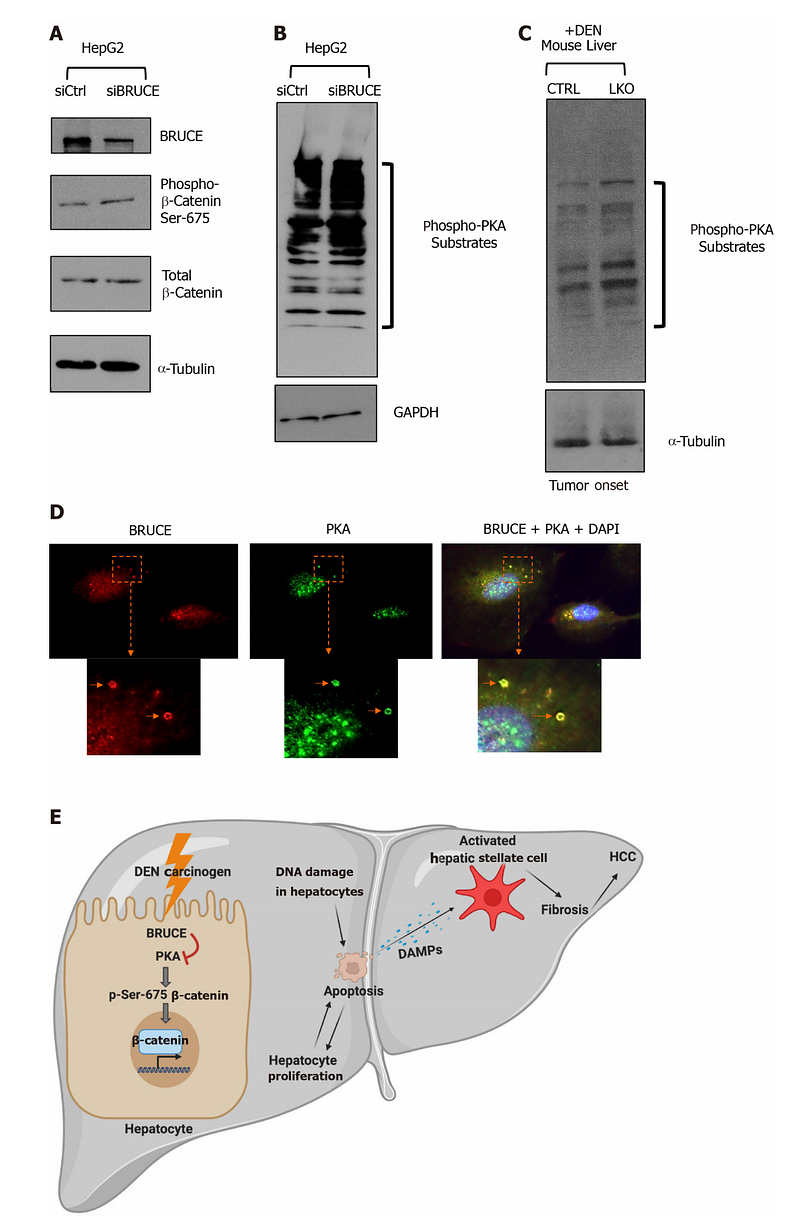
Authors: Vilfranc CL, Che LX, Patra KC, Niu L, Olowokure O, Wang J, Shah SA, Du CY.
Abstract: “BIR repeat-containing ubiquitin conjugating enzyme (BRUCE) is a liver tumor suppressor, which is downregulated in a large number of patients with liver diseases. BRUCE facilitates DNA damage repair to protect the mouse liver against the hepatocarcinogen diethylnitrosamine (DEN)-dependent acute liver injury and carcinogenesis. While there exists an established pathologic connection between fibrosis and hepatocellular carcinoma (HCC), DEN exposure alone does not induce robust hepatic fibrosis. Further studies are warranted to identify new suppressive mechanisms contributing to DEN-induced fibrosis and HCC. To investigate the suppressive mechanisms of BRUCE in hepatic fibrosis and HCC development. Male C57/BL6/J control mice [loxp/Loxp; albumin-cre (Alb-cre)-] and BRUCE Alb-Cre KO mice (loxp/Loxp; Alb-Cre+) were injected with a single dose of DEN at postnatal day 15 and sacrificed at different time points to examine liver disease progression. By using a liver-specific BRUCE knockout (LKO) mouse model, we found that BRUCE deficiency, in conjunction with DEN exposure, induced hepatic fibrosis in both premalignant as well as malignant stages, thus recapitulating the chronic fibrosis background often observed in HCC patients. Activated in fibrosis and HCC, β-catenin activity depends on its stabilization and subsequent translocation to the nucleus. Interestingly, we observed that livers from BRUCE KO mice demonstrated an increased nuclear accumulation and elevated activity of β-catenin in the three stages of carcinogenesis: Pre-malignancy, tumor initiation, and HCC. This suggests that BRUCE negatively regulates β-catenin activity during liver disease progression. β-catenin can be activated by phosphorylation by protein kinases, such as protein kinase A (PKA), which phosphorylates it at Ser-675 (pSer-675-β-catenin). Mechanistically, BRUCE and PKA were colocalized in the cytoplasm of hepatocytes where PKA activity is maintained at the basal level. However, in BRUCE deficient mouse livers or a human liver cancer cell line, both PKA activity and pSer-675-β-catenin levels were observed to be elevated. Our data support a “BRUCE-PKA-β-catenin” signaling axis in the mouse liver. The BRUCE interaction with PKA in hepatocytes suppresses PKA-dependent phosphorylation and activation of β-catenin. This study implicates BRUCE as a novel negative regulator of both PKA and β-catenin in chronic liver disease progression. Furthermore, BRUCE-liver specific KO mice serve as a promising model for understanding hepatic fibrosis and HCC in patients with aberrant activation of PKA and β-catenin.”
5. Evolution of Phototransduction Genes in Lepidoptera
Find their article here.
“Evolution of phototransduction in Lepidoptera” by Aide Macias-Muñoz, Aline Rangel Olguin and Adriana Briscoe because we characterize novel gene family members that play critical roles in butterfly vision. #VSgetsLIt https://t.co/PLS3fzz5HR
— Adriana Darielle Mejía Briscoe (@AdrianaBriscoe) March 15, 2021
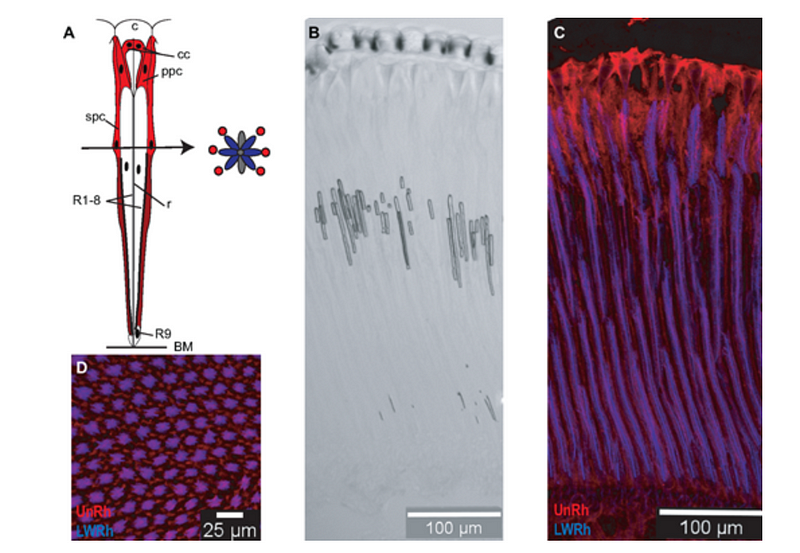
Authors: Aide Macias-Muñoz, Aline G Rangel Olguin, Adriana D Briscoe
Abstract: “Vision is underpinned by phototransduction, a signaling cascade that converts light energy into an electrical signal. Among insects, phototransduction is best understood in Drosophila melanogaster. Comparison of D. melanogaster against three insect species found several phototransduction gene gains and losses, however, lepidopterans were not examined. Diurnal butterflies and nocturnal moths occupy different light environments and have distinct eye morphologies, which might impact the expression of their phototransduction genes. Here we investigated: 1) how phototransduction genes vary in gene gain or loss between D. melanogaster and Lepidoptera, and 2) variations in phototransduction genes between moths and butterflies. To test our prediction of phototransduction differences due to distinct visual ecologies, we used insect reference genomes, phylogenetics, and moth and butterfly head RNA-Seq and transcriptome data. As expected, most phototransduction genes were conserved between D. melanogaster and Lepidoptera, with some exceptions. Notably, we found two lepidopteran opsins lacking a D. melanogaster ortholog. Using antibodies we found that one of these opsins, a candidate retinochrome, which we refer to as unclassified opsin (UnRh), is expressed in the crystalline cone cells and the pigment cells of the butterfly, Heliconius melpomene. Our results also show that butterflies express similar amounts of trp and trpl channel mRNAs, whereas moths express ∼50× less trp, a potential adaptation to darkness. Our findings suggest that while many single-copy D. melanogaster phototransduction genes are conserved in lepidopterans, phototransduction gene expression differences exist between moths and butterflies that may be linked to their visual light environment.”
6. The Pieces of Me: The Double Bind of Race and Gender in Engineering
Find their article here.
Another great paper that I was involved with is out! (My contribution was minor – lots of kudos to PI and first author Kelly Cross!) This one is a quantitative look at the lived experience of women of color in engineering majors.https://t.co/J4FsIIIcjd
— Dr. Kate Clancy 🏳️🌈 (@KateClancy.bsky.social) (@KateClancy) March 2, 2021
Authors: Kelly Cross,
Ruby Mendenhall, Kathryn Clancy, Princess Imoukhuede, Jennifer Amos
Abstract: “Women of color (WOC) continue to be underrepresented and underserved in engineering. Current engineering education literature rarely explores the role of the double bind of race and gender in the experiences of WOC. These “hidden figures” are pushed to the margins of engineering based on deeply held negative racial and gender stereotypes. The purpose of this study was to investigate the impact of the intersections of race and gender or the “double bind” on the engineering education of undergraduate female students of color. A quantitative survey measured the engineering identity, ethnic identity, womanist identity, frequency of racial microaggressions, and self-reported mental health (e.g., stress, anxiety, and depression) of female students of color. We found a positive relationship between ethnic identity and engineering identity, as well as relationships between ethnic and womanist identities and self-reported mental health measures. WOC reported high scores on the commitment subscale of the ethnic identity scale, indicating a strong sense of belonging, attachment, and a personal investment in an ethnic group, in addition to frequent racial microaggressions. Taken together, WOC who have strong ethnic and womanist identities are susceptible to negative stereotype social cues, but have some protection from the greater, often race-based stressors they experience in engineering. Depression correlated to the frequency of experiencing racial microaggressions. Our results suggest that engineering must do more to improve racial climate, reduce gender and racial microaggressions, and create inclusive educational spaces to ensure the full participation of these students.”
7. The Effects of Microaggressions on Depression in Young Adults of Color: Investigating the Impact of Traumatic Event Exposures and Trauma Reactions
Find their article here.
Just published my first first-author research article in the journal of traumatic stress. Looked at racial microaggressions' associations with symptoms of PTSD and depression among young BIPoChttps://t.co/7GhcxREIDQ
Let me try to do one of them twitter breakdowns really quick: pic.twitter.com/DfLVnx3MyU
— Dr. Evan Auguste (@SonDessalines) March 27, 2021
Authors: Evan E. Auguste, Keith R. Cruise, Maria C. Jimenez
Abstract: “Microaggressions are a common way that individuals experience racism in the United States. The current study examined the extent to which microaggressions contribute to mental health difficulties, namely trauma reactions and depression, after controlling for other traumatic event exposures. We sought to address gaps in the literature by quantitatively assessing the associations among microaggressions, posttraumatic stress symptoms, and depression symptoms. Participants were 140 young adults of color (68.8% female) who were recruited online. Linear regression analyses evidenced that microaggressions were uniquely associated with depression symptoms, B = 0.27, after controlling for lifetime traumatic event exposures, with this association partially mediated by trauma reactions, B = 0.49. These results suggest that microaggressions are a clinically relevant factor in understanding mental health problems reported by Black, Indigenous, and People of Color in the United States and warrant analysis, assessment, and intervention through a trauma lens.”
8. Antagonistic and mutualistic interactions alter seed dispersal of understory plants at forest edges
Find their article here.
What a great birthday gift! I am happy to announce my first publication from my graduate work is out in @ESAEcosphere. Antagonistic and mutualistic interactions alter seed dispersal of understory plants at forest edges https://t.co/E9FQSLHxEg
— Carmela M Buono • Thanh Vân (@Carmelambuono) March 12, 2021
Here’s a video example of that antagonistic interaction I captured while doing my field work! Slugs will remove the lipid reward from #myrmecochore seeds and then render them unattractive to mutualistic ants! Read the paper to find out more! pic.twitter.com/o4pcNu1xxR
— Carmela M Buono • Thanh Vân (@Carmelambuono) March 12, 2021
Authors: Wyatt J. Parker, Carmela M. Buono, Kirsten M. Prior
Abstract: “Seed dispersal by ants is an important interaction in North American eastern deciduous forests, where 30–40% of understory plants are myrmecochores, with seeds that possess lipid‐rich appendages (elaiosomes) that attract seed‐dispersing ants. Contemporary forests are fragmented and have regenerated from being previously cleared (secondary forests). In secondary forests, and especially along edges, myrmecochores are a depauperate component of forests. Here, we assess if seed dispersal of myrmecochores by ants, particularly the keystone disperser, Aphaenogaster sp., is intact in forest interiors compared to edges. In three North American northeastern deciduous forests, we compared myrmecochore cover and richness, seed dispersal by ants, and the abundance and richness of ants and other forest floor invertebrates between interiors and edges. We also conducted a seed removal experiment, excluding either ants, rodents (seed predators), or ants and rodents, to test their effects on seed dispersal between interiors and edges. We found differences in the composition of understory plants between interiors and edges, with edges lacking myrmecochores. We also found that seed dispersal by ants was lower in two of the three edges and corresponded to Aphaenogaster sp. abundance. Antagonistic interactions with an invasive slug that is an elaiosome robber, Arion subfuscus, was more apparent than damage by rodents in the experiment, negatively affected dispersal by ants more at edges than in interiors. Here we show that changes in mutualistic and antagonistic interactions affect seed dispersal at forest edges and that not all forest edges are the same, with some more intact than others. Understanding how seed dispersal is impacted in contemporary forests is important towards the goal of conserving and restoring depauperate forest understory communities.”
Our bonus read this month focuses on building and maintaining anti-racist labs. Don’t miss this gem!
9. Ten simple rules for building an antiracist lab
Find their article here.
Learn more about the 10 Simple Rules for Building an Antiracist Lab. Meet authors @aaberhe & @BalaChaudhary on Nov. 24 at 6 p.m. EST. Register at
https://t.co/toK9Q1YDTN pic.twitter.com/WFsEJrkZjX— McMaster Faculty of Science (@McMasterScience) November 16, 2020
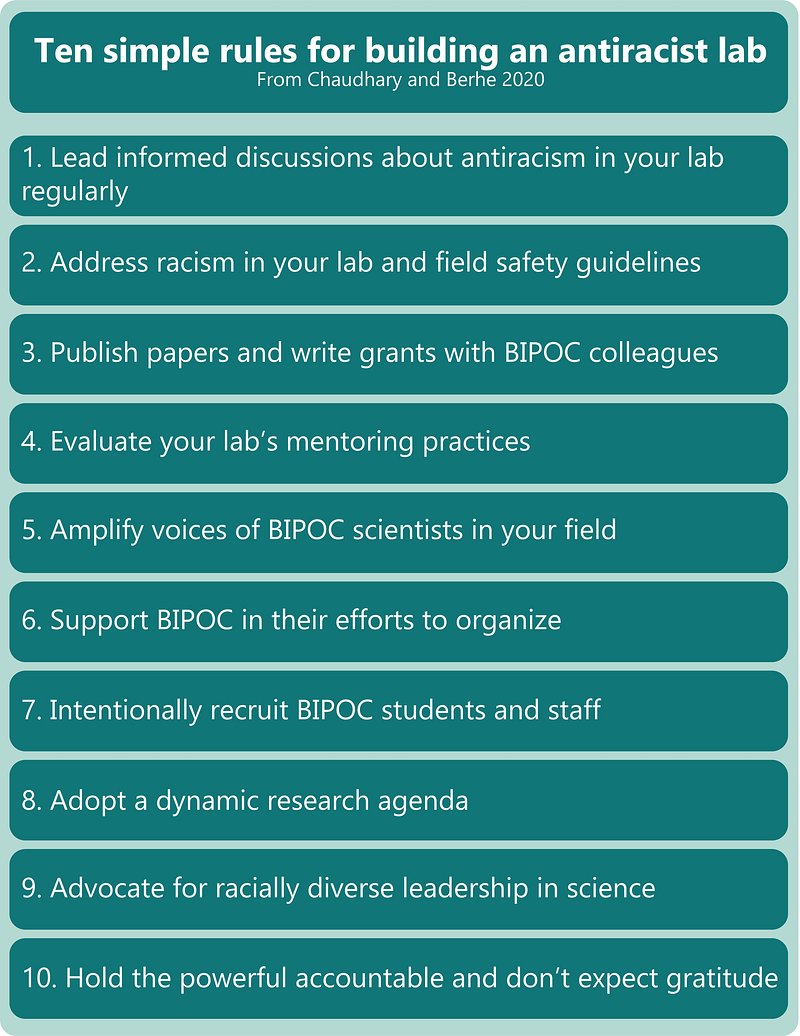
Authors: V. Bala Chaudhary, Asmeret Asefaw Berhe
Abstract: “Demographics of the science, technology, engineering, and mathematics (STEM) workforce and student body in the US and Europe continue to show severe underrepresentation of Black, Indigenous, and people of color (BIPOC). Among the documented causes of the persistent lack of diversity in STEM are bias, discrimination, and harassment of members of underrepresented minority groups (URMs). These issues persist due to continued marginalization, power imbalances, and lack of adequate policies against misconduct in academic and other scientific institutions. All scientists can play important roles in reversing this trend by shifting the culture of academic workplaces to intentionally implement equitable and inclusive policies, set norms for acceptable workplace conduct, and provide opportunities for mentorship and networking. As scientists are increasingly acknowledging the lack of racial and ethnic diversity in science, there is a need for clear direction on how to take antiracist action. Here we present 10 rules to help labs develop antiracists policies and action in an effort to promote racial and ethnic diversity, equity, and inclusion in science.”
This article was originally published on April 6, 2021 on VanguardSTEM.com as part of our #VSGetsLit series.
If you enjoy our original content, consider donating to our parent not-for-profit, The SeRCH Foundation, Inc., to help support this work.
